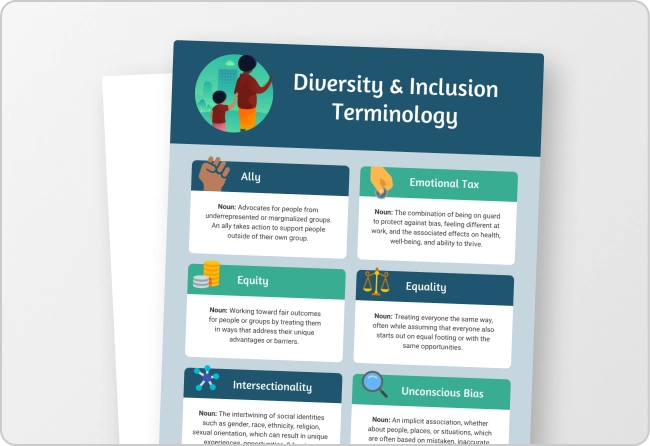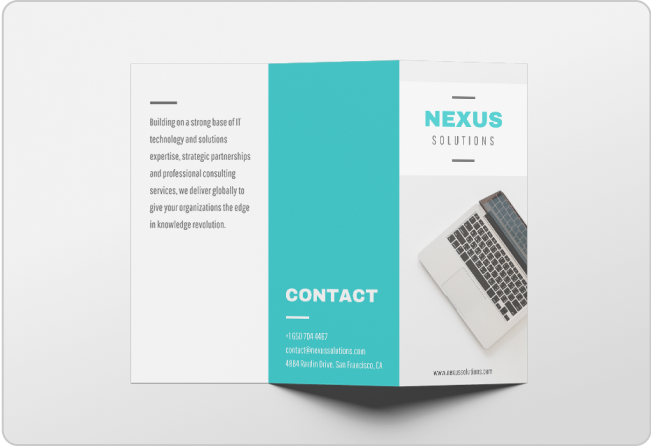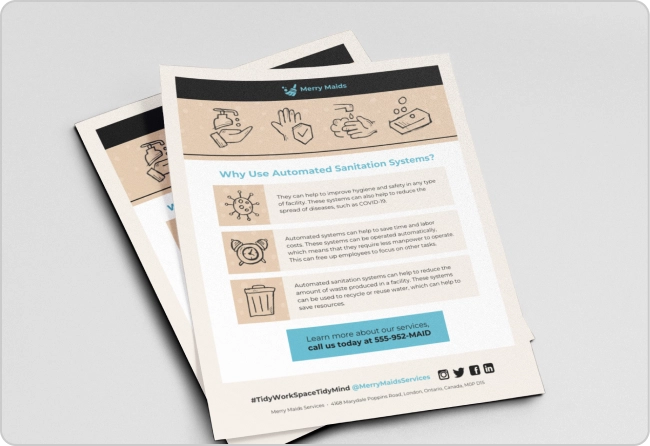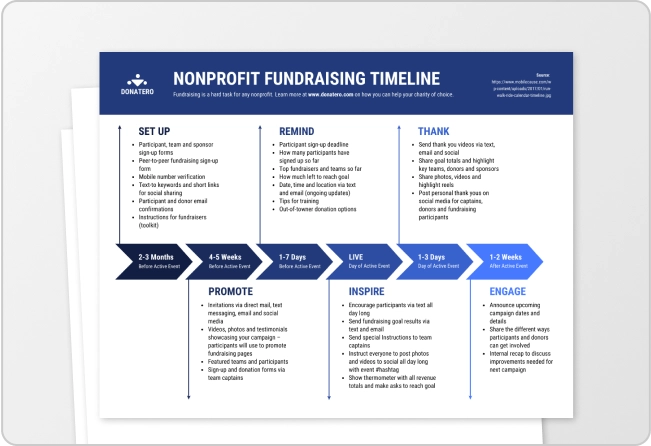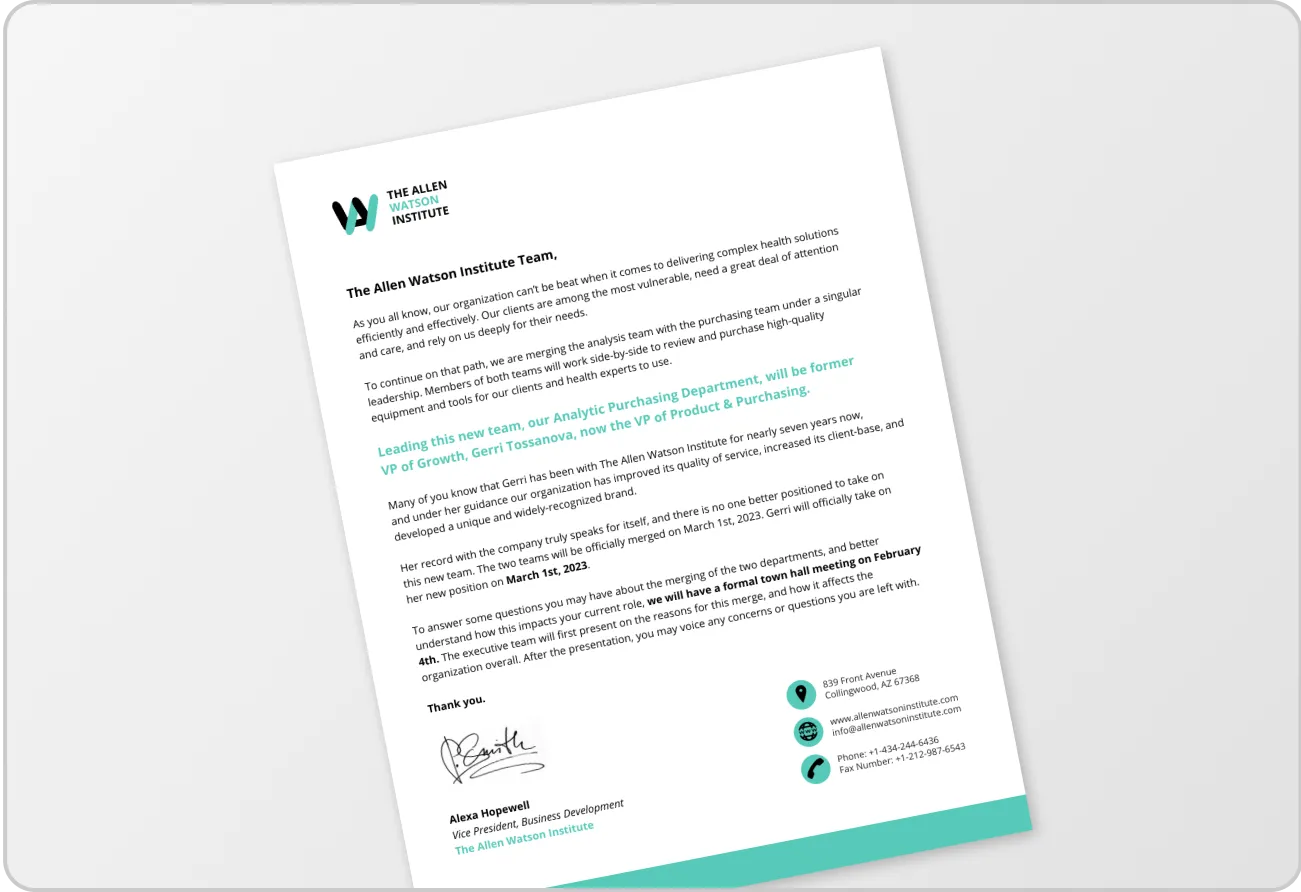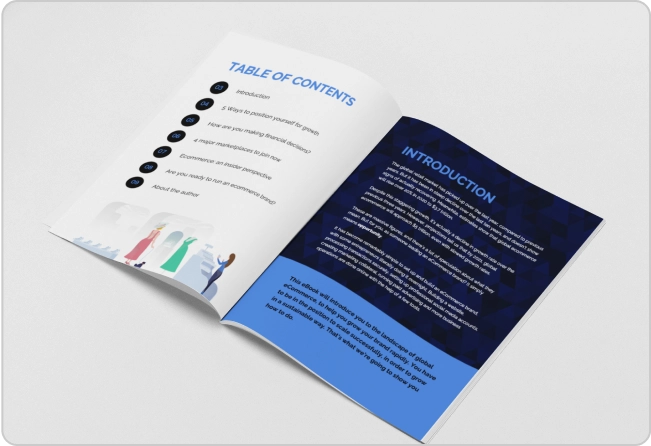
You can’t define a brand in absolute terms. It’s not just a logo, a color palette, or a clever tagline.
What draws people is its personality. Basically, how a brand communicates with you, what its core values are and what it stands for are what the audience remembers and trusts.
In this blog post, I will discuss what a brand personality is, share some brand personality examples and frameworks and explain how you can bring your brand to life using AI tools.
What is brand personality?
Brand personality is a combination of human characteristics, values and beliefs that shape a business. Think of it as your brand’s perceived image. Brand personality is how people interpret your brand and connect with it emotionally through your tone, visuals and messaging.
For example, if you want to create a cheerful brand personality but use bland messaging and visuals, your audience may perceive your personality as formal or professional instead.
Here are the following brand traits that account for personality:
- Tone of voice: How you communicate with your customers and competitors. Is the tone playful, witty, empathetic, or formal? For example, consulting firms like McKinsey and Company have a formal, authoritative tone, while TEDx uses an inspirational and uplifting tone.
- Core values: The beliefs that guide your business decisions, like transparency, innovation, or sustainability.
- Visual identity: This includes design elements like color, typography and imagery that convey your brand’s character.
- Emotional tone: The kind of feeling it leaves with people — trustworthy, bold, calming, etc.
- Cultural references: The symbols, brand archetypes, or associations you draw from. For example, Apple has a creator archetype that focuses on design, individuality, and innovation.
- Behavior: This is all about how your brand acts across real-world interactions. For instance, Ben & Jerry’s actively supports social justice causes and issues statements around that.

Why is brand personality crucial in marketing?
Do people ever compliment you like how you’re cheerful, bold, witty, or easy to talk to? That’s what draws others to you. It’s your human personality, and it helps you connect with people on a deeper level.
Brand personality works the same way. It helps brands connect emotionally and psychologically with their audience.
Here’s why brand personality is important for marketing.
- Building a unique identity: There are so many brands working in the same space, all trying to get customers’ attention. Brand personality gives you a unique identity. Take Duolingo, for example — its audience loves the witty and playful tone, making it different from other learning apps.
- Attracting the right audience: Just like humans are drawn to certain personalities, audiences feel more connected to brands that reflect their own values or make them feel something. Over time, this connection builds a loyal customer base.
- Psychological impact: A strong personality creates an emotional connection and makes people trust or admire your brand.
- Marketing consistency: Brand personality acts as a foundation for your entire branding strategy and consumer connection. It helps you maintain a consistent branding tone and look across all touchpoints, such as website, emails and social media. According to research, digital brand personality impacts social media brand engagement and purchase intentions.
What are the 5 types of brand personality (Aaker’s Framework)
According to the Jennifer Aaker Framework, brand personalities are divided into five categories: sincerity, excitement, competence, sophistication and ruggedness. They help define brand traits, including tone and visual identity.
Let’s break down each brand personality category with real-world examples to understand how brands focus on messaging, design and behavior.
Sincerity
Sincere brands are honest, wholesome, cheerful and down-to-earth. They genuinely care about their community and build trust through transparency and empathy. The tone of voice for a sincere brand personality is often warm and friendly, and the visuals lean toward soft colors and clean layouts.
Example: Warby Parker
Warby Parker, an American eyewear company, is one of the best examples of a sincere brand personality that focuses on accessibility and impact.
In 2024, the brand distributed over 20 million pair of glasses through its Buy a Pair, Give a Pair program. The Warby Parker Impact Foundation is a non-profit organization that helps people receive quality vision care.

Excitement
Brands with an excitement personality are daring, imaginative, free-spirited, and always on-trend. Their tone of voice is bold, energetic, and informal. Their visual identity includes bright colors, bold typography, and dynamic layouts that reflect movement and innovation.
Example: Revolut
Revolut, the UK-based fintech brand, markets itself as a fast-moving and disruptive brand built for digital nomads and global spenders. It uses a sharp and confident tone. Plus, you’ll see Revolut using bold gradients, edgy copy and bold product launches to fuel excitement.

Competence
This brand personality type presents itself as reliable, competent and successful. These brands position themselves as industry leaders through innovation, strong performance and efficient processes.
Example: IBM
IBM is a classic example of the competence brand personality. Its messaging centers around smart data and enterprise solutions. IBM mostly uses a confident and formal tone with a lot of data-driven insights.

Sophistication
This category focuses on luxury and elegance and appeals to an upper-class audience. It uses a charming tone with subtle language to convey confidence. Sophisticated brands use muted tones, pastels, gold accents, and lots of white space to signal luxury.
Example: Estée Lauder
Estée Lauder is a sophisticated beauty brand famous for premium skincare. They use ivory and gold tones to give a luxurious look.

Ruggedness
Ruggedness brand personality type is outdoorsy, tough and resilient. They focus on strength and adventure. You’ll see such brands use earthen shades and backgrounds and real-world photography that feels raw and unfiltered.
Example: Harley-Davidson
Harley-Davidson is an excellent example of a rugged brand focusing on riding culture. It shows masculinity, edge, and raw energy. The brand visuals are often centered around open roads, grit, and real riders.

Real-world brand personality examples
Want to learn how famous brands define themselves? Here are some brand personality examples of leading companies.
1. Nike brand personality
Nike’s brand personality is bold, focused, and empowering. The campaigns position the brand as a motivator that pushes its audience to overcome limits and keep going.
- Tone of voice: Direct, motivational, high-energy
- Visual identity: Dark backgrounds, bold type, strong athlete visuals, dramatic contrast
- Customer perception: A brand that champions achievement and resilience
- Brand narrative: Whether it’s an Olympic athlete or a first-time runner, Nike always casts the customer as the hero of the story, be it an Olympic athlete or a first-time runner.
2. Duolingo brand personality
Duolingo has built a brand personality that’s loud, playful, and deliberately unpolished. It focuses on entertaining its customers.
- Tone of voice: Witty, self-aware, meme-driven
- Visual identity: Bright green mascot, emoji-heavy visuals, bold sans-serif fonts
- Customer perception: A fun and slightly chaotic app that doesn’t take itself too seriously
- Brand narrative: Duolingo’s social media is where its personality thrives. From passive-aggressive reminders to viral TikToks, it uses humor to stay top-of-mind and make learning feel less like a task.
3. Zappos brand personality
Zappos is known for its customer service, and its brand personality reflects that: helpful, sincere, and people-first.
- Tone of voice: Friendly, warm, supportive
- Visual identity: Clean layouts, approachable colors, minimal branding
- Customer perception: A brand that listens, responds, and actually cares
- Brand narrative: Zappos doesn’t focus on fashion trends or fast delivery. It focuses on the customer experience. Whether it’s a free return, a surprise upgrade, or a kind gesture, Zappos expresses its personality through action, not just messaging.
4. Starbucks brand personality
Starbucks blends accessibility with a premium feel. It’s not flashy, but it’s polished. Its personality is calm, refined, and rooted in everyday rituals.
- Tone of voice: Inclusive, thoughtful, balanced
- Visual identity: Earthy tones, clean typography, cozy lifestyle photography
- Customer perception: A familiar, upscale brand that offers comfort and consistency
- Brand narrative: Starbucks positions itself as a “third place” — not home, not work, but something in between. From its seasonal menus to sustainability messaging, everything is curated to feel intentional and soothing.
5. Red Bull brand personality
Red Bull’s brand personality is adventurous and high-energy. It’s all about pushing physical and mental limits.
- Tone of voice: Confident, edgy, fearless
- Visual identity: Bright reds and blues, high-contrast imagery, fast cuts and motion
- Customer perception: More than an energy drink — it’s a media brand for adrenaline seekers
- Brand narrative: Red Bull tells stories of extreme sports, creative stunts, and boundary-pushing feats. Whether it’s sponsoring Formula 1 or sending someone to the edge of space, the brand’s content does the heavy lifting in expressing its personality.
How to define your brand’s personality (Step-by-Step)
Now, I will take you through the step-by-step process to build brand personality.
Step 1: Understand your audience’s emotional expectations
The first thing is to understand your target audience, their demographics and what they expect from a brand in your space. For instance, a crypto platform targeting men aged 18–30, tech-savvy and risk-tolerant, would likely go with the excitement (bold and adventurous) personality. Short copy, bright colors, and a fast, confident tone may resonate more here.
Understand your audience’s:
- Age
- Gender identity
- Income level
- Occupation or industry
- Cultural background
- Core values
- Digital habits
- Preferred tone (formal vs casual, direct vs descriptive)
Venngage’s buyer persona template can help you define your target audience so you can define brand personality traits.
Step 2: Choose a brand archetype or personality framework
To keep things structured, choose a framework that gives you direction. You can use:
- Aaker’s Brand Personality Dimensions: Sincerity, excitement, competence, sophistication and ruggedness.
- Jungian Brand Archetypes: Explorer, caregiver, rebel, sage, lover, etc.
Choose the one that fits how you want to be perceived and how your audience already sees brands they trust.
For instance, if you’re building a travel startup focused on offbeat destinations and self-discovery, the ‘Explorer’ archetype might guide your tone and visuals better than a broad term like ‘adventurous.
Write down your business goals and what your audience values. Then pick 1–2 brand personality categories or archetypes that align with both.
Now define the specific traits that reflect your brand’s voice, such as optimistic, bold, or honest. These traits should be clear, descriptive, and easy to apply across your content, visuals and interactions. This is the foundation of how your brand sounds, looks and behaves in the world.
Start by answering a few key questions:
- What does your brand stand for?
- What do you believe in, beyond your product?
- How do you want people to describe your brand after their first interaction?
- What do you want your brand to be known for long-term?
Example: If you are building a productivity app for remote teams, use traits
- Traits: Efficient, supportive, calm, helpful, innovative
- Why: Your audience is busy, easily overwhelmed, and looking for structure. The brand tone should reflect clarity and calm, not energy overload.
Pro Tip: You can use Venngage’s AI Word Cloud Generator to list similar adjectives for choosing your brand personality.
Step 3: Translate traits into brand expressions
Your traits only work if they translate into actual brand experiences — visual identity, tone of voice, messaging, and behavior.
Here’s how to bring them to life:
- Tone of voice: Is your copy short and punchy, or slow and thoughtful?
- Visual identity: What colors, typography, or layouts reflect your traits?
- Messaging: What kind of language do you use in your headlines or product pages?
- Behavior: How do you show up in customer service or on social media?
Example: A brand that’s “optimistic and calm” might use a soft color palette, long-form reassuring copy, and warm support messages. A “bold and clever” brand might go for contrast-heavy design, punchy microcopy, and informal support responses.
Step 4: Document it in your brand guidelines
Once defined, your brand personality needs to be easy to reference and apply. Create a section in your brand guidelines that outlines:
- Your 3–5 personality traits with descriptions
- Tone of voice do’s and don’ts
- Sample phrases or copy blocks that reflect your voice
- Visual examples: typography, colors, layouts, moodboards
This helps everyone from marketing to product to support teams keep things consistent.
If you need some guidance to create a brand style guideline document, try Venngage’s brand guidelines templates. Here is an example:
What is the difference between brand personality and brand identity?
Brand identity is the visual and structural representation of your brand. It includes your logo, color palette, typography, design system, and any visual assets that make your brand recognizable. It’s what people see first.
Brand personality, on the other hand, is the emotional and human side of your brand. It’s how you communicate — your tone of voice, messaging style, values, and how you make people feel. It’s what people experience and remember after interacting with your brand.
Think of it this way:
Your brand identity is your outward appearance.
Your brand personality is your attitude and behavior.
How to document and maintain your brand personality
Defining your brand personality is only the first step. To make it usable, you need to document it in a way that your entire team — from marketers to designers to freelancers — can understand and apply. This is where editorial brand consistency becomes essential.
Here’s how to create a system that scales with your brand and keeps your personality intact across every touchpoint.
1. Create reusable templates to reinforce brand voice
Use branded templates that reflect your tone of voice and design system. You can create templates for the following visuals:
- Social media graphics
- Blog visuals and quote cards
- Reports and infographics
- Slide decks and internal documents
With Venngage for Teams, you can build shared templates and set role-based access so everyone stays aligned, regardless of who’s creating content.

2. Develop a practical style guide
Think of this as your day-to-day playbook for writing. Your style guide should help your team understand how to apply your brand personality in real content — blog posts, emails, product descriptions, even customer support.
What to cover:
- Tone variations (e.g., how you speak on social vs. in reports).
- Grammar and punctuation preferences.
- Word choices to use or avoid.
- Guidelines for inclusive and accessible language.
This ensures your content tone stays consistent, even as formats or channels change.
4. Run brand audits
Even with documentation, brands evolve. Check brand visuals and copy regularly for misalignment between your brand personality and how you actually sound and look.
What to audit:
- Headlines and social posts: Does the tone match your personality traits?
- Visuals: Are new graphics aligned with your color and layout rules?
- Customer-facing documents: Do they follow the same tone and structure as your brand book?
Common mistakes to avoid while creating a brand personality
Here are some of the most common mistakes brands make, and how to avoid them.
1. Being too generic
Adjectives like “friendly,” “innovative,” or “authentic” don’t mean much on their own. Without context or specific brand expressions, they lead to vague content and brand confusion.
Define each personality trait with examples. If your brand is “bold,” explain what that means in your tone, visuals, and behavior. Use sample copy and design references to make it tangible.
2. Confusing tone with personality
Your tone is just one expression of your personality. It can shift depending on the channel or audience, but your core personality traits should stay consistent.
A brand may sound more playful on social media and more measured in investor decks, but it’s still the same brand. If the underlying traits aren’t clear, it leads to off-brand messaging.
3. Treating personality as a one-time exercise
Brand personality should evolve as your audience or product evolves. If you never revisit it, your brand may stop reflecting who you are — or who your customers expect you to be.
Review your brand personality at least once a year and refresh brand personality over time. Ask: Is this still how we want to be perceived? Are we showing up this way across platforms? Based on your audience’s expectations and behavior, you need to do a brand repositioning.
Final thoughts: Why brand personality drives brand success
A well-defined brand personality brings clarity to your messaging and helps your team create content and experiences that feel aligned across every touchpoint. It creates differentiation in crowded markets, where product features alone aren’t enough to stand out.
And most importantly, it builds emotional resonance that makes people feel something, which is what drives loyalty over time. Start with defining your brand personality traits and gradually integrating them into your visuals.
Venngage can help you stay consistent with your brand personality. You can use its templates to define brand guidelines, create social media templates and set up your brand kit.
FAQs on Brand Personality
1. How is brand personality different from brand tone of voice?
Brand personality is the broader set of human traits your brand embodies — like bold, thoughtful, or optimistic. Tone of voice is how that personality comes through in language. For example, a bold brand may use short, punchy sentences, while a thoughtful one might sound more reflective and warm.
2. Can small businesses or personal brands benefit from defining a brand personality?
Yes. Whether you’re a solo creator or a growing business, having a clear personality helps you stand out. It keeps your voice consistent and helps people remember how you made them feel.
3. Is brand personality only relevant for consumer brands?
Not at all. B2B brands also benefit from strong brand personalities — especially in crowded markets. A competent, trustworthy, or even daring personality can shape how decision-makers perceive your brand.
4. What tools or exercises help define brand personality traits?
Start with customer personas, emotional mapping, and personality frameworks like Aaker’s five dimensions or Jungian archetypes. Word banks and brand voice sliders are useful exercises to narrow down traits. Tools like Venngage can help visualize your personality with branded templates and style guides
5. How does brand personality impact visual design choices?
Your personality should guide every visual decision — from typography and color to layout and photography style. A calm, sincere brand may use soft colors and clean design, while an energetic brand might use bold contrast and dynamic visuals.
6. Can an inconsistent brand personality hurt customer trust?
Yes. If your brand’s tone or visuals shift too often, it creates confusion. This kind of inconsistency makes it harder for customers to understand who you are or what you stand for, which affects trust and loyalty.
7. How often should a company reassess its brand personality?
At least once a year, or when you’re entering new markets, rebranding, or launching a new product. If your audience or business goals evolve, your personality may need refinement.
8. Are there risks in using humor or edgy traits in brand personality?
Yes. Humor and irreverence can create strong engagement, but they’re also polarizing. Make sure they align with your audience and industry. If done poorly, it can feel forced or even insensitive.
9. How can AI tools help maintain brand personality?
AI tools can help generate on-brand content, create style guide templates, or check for tone consistency across copy. Platforms like Venngage can also lock in your brand colors, fonts, and visual rules to ensure editorial consistency.
10. What’s a quick way to test if a brand’s personality is clear?
Ask five people (internal and external) to describe your brand in three words. If their answers are aligned with your intended traits, you’re on the right track. If not, your personality might need refining or better documentation.
































